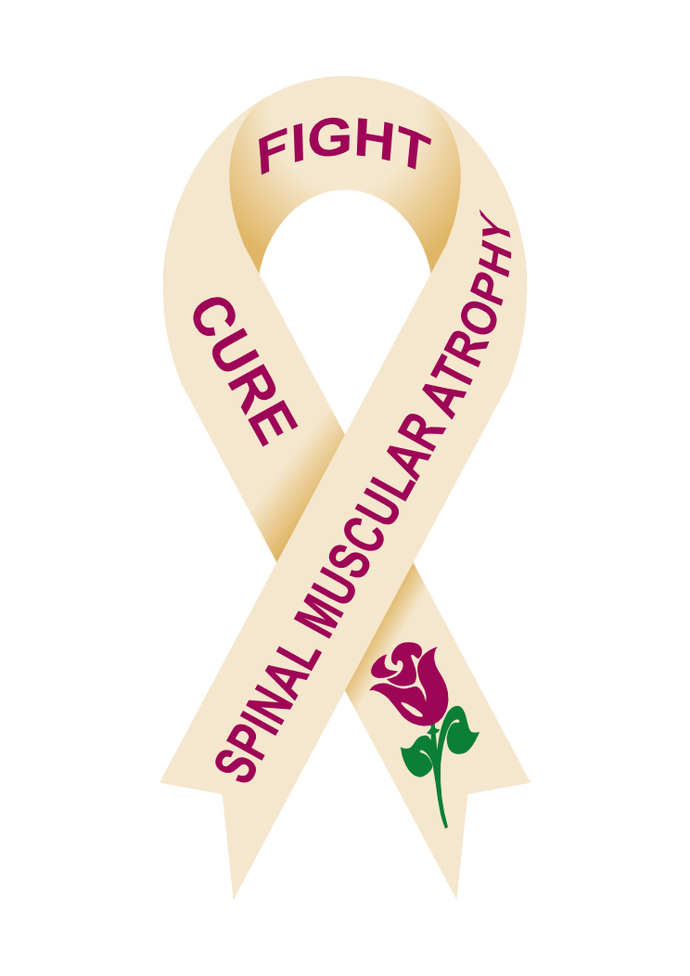At 15 years of age Crystal experienced respiratory failure and had to be trached, ventilated and this began a 14 month long stay in the hospital. She is no stranger to hospitals. After over 300 hospital admissions, she’s stopped counting. Crystal has graduated high school with honours and a GPA of %100! More recently she has also been diagnosed with Endometriosis. At 28 years of age she continues to be a voice of comfort, knowledge, reason and experience to student doctors, others living SMA, their families, among others living with disabilities. Crystal writes for Winnipeg’s Weekly Urban Journal, The Uniter. She also models at KittyCat Vicious Alternative Entertainment. Check out her fb page and personal blog, Crystal Lee: My Uncensored Life to learn more about this young woman, her disABILITY, various health issues she lives with and how she copes.
Crystal Lee: My Uncensored Life
“I’m Crystal and I’m a young woman with a disability and various health issues. This is my personal blog, follow me and my story 🙂 Visit http://www.myuncensoredlife.com/”
Crystal is active in the Manitoba Chapter For Muscular Dystrophy Canada. Her mother is president. Her family is a pillar in the Muscular Dystrophy Canada community in Manitoba. Their chapter puts on great events throughout the year raising awareness for MD. One event that I have enjoyed checking out was Rumbling The Road For Muscular Dystrophy. Please come out and show your support. Motorcycle enthusiasts can admire some of the great bikes participating in this event, also some nice cars too and a fantastic group of folks all together. “With starting points in Winnipeg and Steinbach Manitoba, riders rumble the highways on motorcycles, in muscle cars, and more! All in support of raising funds and awareness for Muscular Dystrophy Canada – Manitoba Chapter. The riders meet in Morden MB for a wrap up BBQ hosted by Morden Fire Fighters.” The ride this past summer was in memory of Joshua “Squirt” Desender – “an incredible young man who we lost too soon.”
CRYSTAL MAKES A DIFFERENCE AND MAKES A DIFFERENCE IN MY LIFE.
What is Spinal Muscular Atrophy (SMA)? It is an inherited childhood *neurodegenerative disorder caused by ubiquitous deficiency of the survival motor neuron (SMN) protein – the hallmarks of which are the selective loss of motor neurons and skeletal muscle atrophy.
Learning about this incredible woman, I was curious to know who was the most memorable mentor in her SMA support? Her reply was: “My most memorable support other than my parents of course, would have to be my paediatric respiratory specialist Dr Louise Giles and the nurses who cared for me when I was in and out of the hospital as a kid. They answered all the questions I’ve ever had, they gave me the tools to fight against this disease and taught me how to make the best out of it by teaching and helping others. If there was a family that was going through something like a G Tube insertion, my doctors and nurses would ask me to talk to them. I’ve been teaching families and residents since I was 4 years old. Families and residents are really receptive when someone who has gone through the disease ie procedure, is the person teaching them.”
One thing of many I see about Crystal and greatly respect is a certain kind of magnificent strength and professionalism in her advocacy. Crystal advocates in a very well rounded way on many levels. She has a clear focus and keen perception with many things going on in our world.
Online alone we all see so many bullies, when asked if there were any messages for bullies and those perpetuating negative stigma around disabilities she explains “just because you think you know what being disabled means, educate yourself anyway. A person in a chair is not always intellectually disabled. Also, many disabilities are invisible and a person can become disabled at any time, so think twice before bullying someone for something that you think makes them inferior to you because one day, it could be you that’s ‘inferior’. ”
When talking about pain and the benefits of medical cannabis; Crystal looks to the cookie, medicated edibles. When she eats a cannabis infused cookie she mentions “my pain can go from an eight to a zero”. Wow, what an incredible plant!! She’s been learning some of the cultivars that benefit her most and why. In the future she wouldn’t mind learning the process of growing cannabis and overseeing the production of a medicinal grow best suited for her. Crystal recognizes that using cannabinoids from the cannabis plant in small-molecule delivery by nanoparticles to target areas and pathways implicated in SMA may be a part of the future to control pain. “It might even replace some of protein that sma patients are missing. We know that cannabis can slow the growth of cancer cells, destroy cancer cells to a point and stop seizures. It’d be very interesting and possibly beneficial to see what else it could do on a molecular level.” Crystal adds.
Drug delivery and DNA nanotechnology
“I love that people are becoming more open to the idea of using something natural instead of all of the addictive opiates and narcotics. As someone who has had experiences with narcotic medications, there are so many side effects to them including addiction. Cannabis is a lot safer to use, however I’m in no way discouraging medicine if that’s what is needed (like chemo for example).” says Crystal with regards to the continually increasing use of cannabis for medicine.
Also, studies are showing that cannabinoids are effective antiemetics for the prevention AND treatment of chemotherapy induced nausea & vomiting. Cannabinoids (both phyto-derived and synthetic) behave as agonist antiemetics via the activation of cannabinoid CB₁ receptors in both the brainstem and the ENS emetic loci.
Cannabinoids can also affect both the activity and the expression of TRPV1-4 channels, with various potential therapeutic applications, in some SMA patients, TRPV4 mutations are noticed (not all). Why not also target TRPV4 with various cannabinoid blends until the most beneficial one is discovered for the individual?
Like many of us, Crystal has a Bucket List. “Make a difference in someone’s life.” was one of the things on the list… ..I can honestly say that Crystal makes a difference in my life.
Crystal’s list also includes meeting Ellen DeGeneres!! Please help Crystal meet Ellen and nominate Crystal here!
Like Ellen, Crystal makes a difference in peoples lives like no other.
Take time to write to Ellen like I did and explain how awesome it would be to see Ellen and Crystal meet!

Start right here: Nominate Someone Who Should Meet Ellen!
 Do you know someone who is so incredible, so kind and who goes so far above and beyond anytime someone needs her/him that you want to nominate them for a trip to L.A. to meet Ellen? If you know someone who stays positive, helps others and loves Ellen, tell us about them right here!
Do you know someone who is so incredible, so kind and who goes so far above and beyond anytime someone needs her/him that you want to nominate them for a trip to L.A. to meet Ellen? If you know someone who stays positive, helps others and loves Ellen, tell us about them right here!
Lets Get Crystal On Ellen!

Click the above image to visit the “Get Crystal On Ellen” Facebook page, give a “Like” and show your support.


“By age four, I had a good understanding of my disease and I started helping with medical decisions. By age seven, I could start my own IV and read my own X-rays.”
Crystal receives medicinal benefits from cannabis cookies. It’s the only thing that gives her relief. “As soon as I eat the cannabis, my pain can go from an eight to a zero”, Says Rondeau.
The endocannabinoid system, which happens to be implicated in ALL Human diseases and disorders involves cannabinoid receptors type 1 (CB1R) and type 2 (CB2R), endogenous cannabinoids and the enzymes that catabolize these compounds, has been shown to contribute to the development of neurodegenerative disorders in several animal models and human studies. Therefore it would seem to me that there is a therapeutic efficacy of targeting the endocannabinoid system to rescue neurodegenerative disorders.
Considering that neuroinflammation has been widely reported as an indicator and modulator of neurodegeneration, couldn’t the reduction of the neuroinflammatory responses also be considered as a new therapeutic strategy?
The studies on the Endocannabinoid System are continually being strengthened. Shouldn’t we also include the role of the endocannabinoid signaling system in controlling neuronal survival. This is an important issue to be considered when developing new therapies for neurodegenerative disorders.
“Moreover, recent studies have shown that endogenous cannabinoid signaling plays a number of modulatory roles throughout the central nervous system (CNS), including the neuroinflammation and neurogenesis. In particular, the up-regulation of type-2 cannabinoid (CB2) receptors has been found in a number of neurodegenerative disorders. Thus, the modulation of CB2 receptor signaling may represent a promising therapeutic target with minimal psychotropic effects that can be used to modulate endocannabinoid-based therapeutic approaches and to reduce neuronal degeneration.” For these reasons, why not focus on the CB2 receptor as a promising pharmacological target in a number of neurodegenerative diseases, including SMA2?”
“Cannabinoids form a singular family of plant-derived compounds (phytocannabinoids), endogenous signaling lipids (endocannabinoids), and synthetic derivatives with multiple biological effects and therapeutic applications in the central and peripheral nervous systems. One of these properties is the regulation of neuronal homeostasis and survival, which is the result of the combination of a myriad of effects addressed to preserve, rescue, repair, and/or replace neurons, and also glial cells against multiple insults that may potentially damage these cells. These effects are facilitated by the location of specific targets for the action of these compounds (e.g., cannabinoid type 1 and 2 receptors, endocannabinoid inactivating enzymes, and nonendocannabinoid targets) in key cellular substrates (e.g., neurons, glial cells, and neural progenitor cells). This potential is promising for acute and chronic neurodegenerative pathological conditions.”
I feel this information demands a prompt clinical validation of cannabinoid-based medicines for the treatment of SMA.
“Cannabidiol (CBD) is a phytocannabinoid with therapeutic The neuroprotective potential of CBD, based on the combination of its anti-inflammatory and anti-oxidant properties, is of particular interest and is presently under intense preclinical research in numerous neurodegenerative disorders.” , why not SMA 2, too?

Cannabinoid receptor mediated medicinal and pharmacological activities of lead compounds isolated from medicinal plants.
Cannabis Used To Alleviate Spinal Muscular Atrophy Type 2
Click above photo to read Crystal’s 420 speech – 2017
If you are suffering and haven’t been able to find relief from your current treatments, why not consider talking to your healthcare practitioner about medical cannabis.
Pay it forward. Contact the Manitoba Chapter For Muscular Dystrophy Canada and ask how you can help. Join Crystal in efforts with Save A Dog Network, Children’s Wish Foundation The Manitoba Chapter, and Children’s Hospital Foundation.
This CannaBlog is dedicated to “current cannabis patients, to people who are ill and interested in cannabis as a line of treatment and to medical professionals that are willing to learn about the benefits of cannabis.”
– Crystal Rondeau

“Crystal Rondeau is a rock music and tattoo-loving young woman who lives with a physical disability and chronic illness. Her main goal in life is to break barriers and destroy the stigmas that come with being disabled and ill. She does this by speaking in schools, volunteering and being very open and uncensored about her life.”
..here’s to temperatures above +20C and dry to mild humid days for you and me. 







